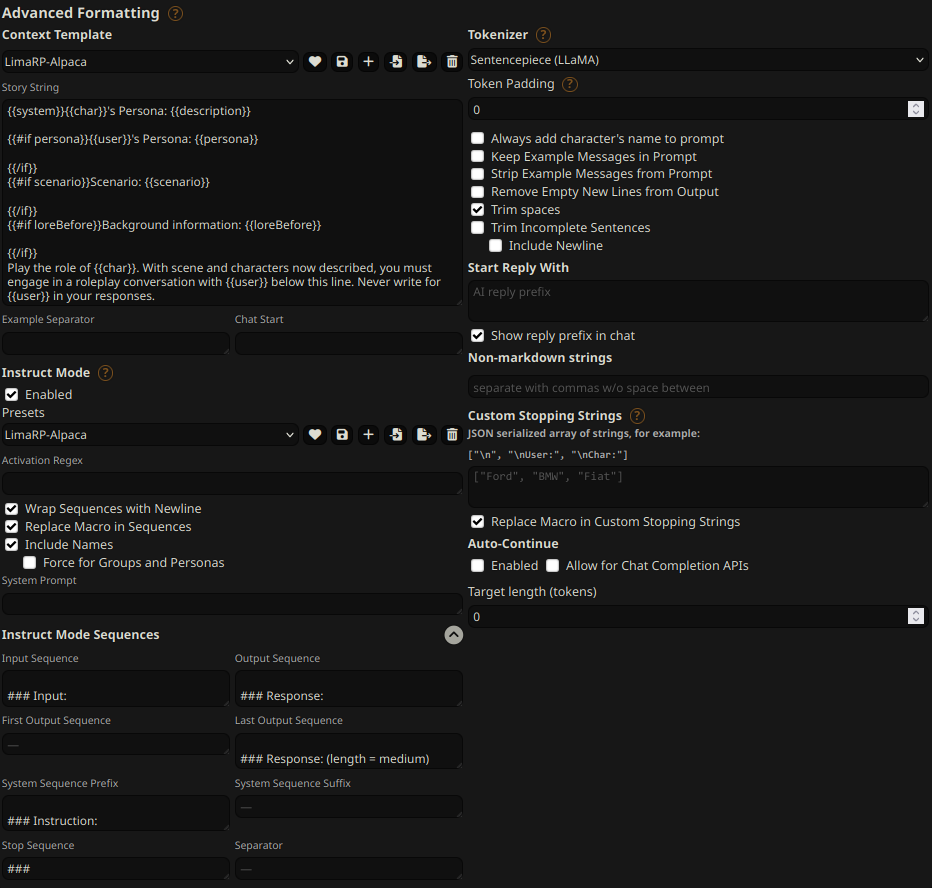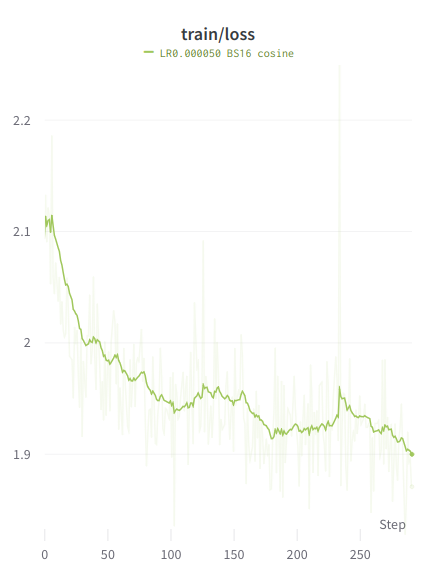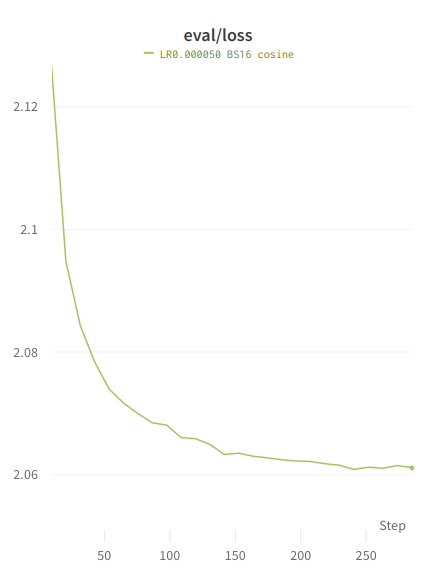Synatra-7B-v0.3-RP🐧
Support Me
시나트라는 개인 프로젝트로, 1인의 자원으로 개발되고 있습니다. 모델이 마음에 드셨다면 약간의 연구비 지원은 어떨까요?

Wanna be a sponser? Contact me on Telegram AlzarTakkarsen
License
This model is strictly non-commercial (cc-by-nc-4.0) use only. The "Model" is completely free (ie. base model, derivates, merges/mixes) to use for non-commercial purposes as long as the the included cc-by-nc-4.0 license in any parent repository, and the non-commercial use statute remains, regardless of other models' licences. The licence can be changed after new model released. If you are to use this model for commercial purpose, Contact me.
Model Details
Base Model
mistralai/Mistral-7B-Instruct-v0.1
Trained On
A6000 48GB * 8
Instruction format
It follows ChatML format.
TODO
RP 기반 튜닝 모델 제작데이터셋 정제- 언어 이해능력 개선
상식 보완- 토크나이저 변경
Model Benchmark
Ko-LLM-Leaderboard
On Benchmarking...
Implementation Code
Since, chat_template already contains insturction format above. You can use the code below.
from transformers import AutoModelForCausalLM, AutoTokenizer
device = "cuda" # the device to load the model onto
model = AutoModelForCausalLM.from_pretrained("maywell/Synatra-7B-v0.3-RP")
tokenizer = AutoTokenizer.from_pretrained("maywell/Synatra-7B-v0.3-RP")
messages = [
{"role": "user", "content": "바나나는 원래 하얀색이야?"},
]
encodeds = tokenizer.apply_chat_template(messages, return_tensors="pt")
model_inputs = encodeds.to(device)
model.to(device)
generated_ids = model.generate(model_inputs, max_new_tokens=1000, do_sample=True)
decoded = tokenizer.batch_decode(generated_ids)
print(decoded[0])
Why It's benchmark score is lower than preview version?
Apparently, Preview model uses Alpaca Style prompt which has no pre-fix. But ChatML do.
AshhLimaRP-Mistral-7B (Alpaca, v1)
This is a version of LimaRP with 2000 training samples up to about 9k tokens length finetuned on Ashhwriter-Mistral-7B.
LimaRP is a longform-oriented, novel-style roleplaying chat model intended to replicate the experience of 1-on-1 roleplay on Internet forums. Short-form, IRC/Discord-style RP (aka "Markdown format") is not supported. The model does not include instruction tuning, only manually picked and slightly edited RP conversations with persona and scenario data.
Ashhwriter, the base, is a model entirely finetuned on human-written lewd stories.
Available versions
- Float16 HF weights
- LoRA Adapter (adapter_config.json and adapter_model.bin)
- 4bit AWQ
- Q4_K_M GGUF
- Q6_K GGUF
Prompt format
Extended Alpaca format,
with ### Instruction:, ### Input: immediately preceding user inputs and ### Response:
immediately preceding model outputs. While Alpaca wasn't originally intended for multi-turn
responses, in practice this is not a problem; the format follows a pattern already used by
other models.
### Instruction:
Character's Persona: {bot character description}
User's Persona: {user character description}
Scenario: {what happens in the story}
Play the role of Character. You must engage in a roleplaying chat with User below this line. Do not write dialogues and narration for User.
### Input:
User: {utterance}
### Response:
Character: {utterance}
### Input
User: {utterance}
### Response:
Character: {utterance}
(etc.)
You should:
- Replace all text in curly braces (curly braces included) with your own text.
- Replace
UserandCharacterwith appropriate names.
Message length control
Inspired by the previously named "Roleplay" preset in SillyTavern, with this version of LimaRP it is possible to append a length modifier to the response instruction sequence, like this:
### Input
User: {utterance}
### Response: (length = medium)
Character: {utterance}
This has an immediately noticeable effect on bot responses. The lengths using during training are:
micro, tiny, short, medium, long, massive, huge, enormous, humongous, unlimited.
The recommended starting length is medium. Keep in mind that the AI can ramble or impersonate
the user with very long messages.
The length control effect is reproducible, but the messages will not necessarily follow lengths very precisely, rather follow certain ranges on average, as seen in this table with data from tests made with one reply at the beginning of the conversation:
Response length control appears to work well also deep into the conversation. By omitting the modifier, the model will choose the most appropriate response length (although it might not necessarily be what the user desires).
Suggested settings
You can follow these instruction format settings in SillyTavern. Replace medium with
your desired response length:
Text generation settings
These settings could be a good general starting point:
- TFS = 0.90
- Temperature = 0.70
- Repetition penalty = ~1.11
- Repetition penalty range = ~2048
- top-k = 0 (disabled)
- top-p = 1 (disabled)
Training procedure
Axolotl was used for training on 2x NVidia A40 GPUs.
The A40 GPUs have been graciously provided by Arc Compute.
Training hyperparameters
A lower learning rate than usual was employed. Due to an unforeseen issue the training was cut short and as a result 3 epochs were trained instead of the planned 4. Using 2 GPUs, the effective global batch size would have been 16.
Training was continued from the most recent LoRA adapter from Ashhwriter, using the same LoRA R and LoRA alpha.
- lora_model_dir: /home/anon/bin/axolotl/OUT_mistral-stories/checkpoint-6000/
- learning_rate: 0.00005
- lr_scheduler: cosine
- noisy_embedding_alpha: 3.5
- num_epochs: 4
- sequence_len: 8750
- lora_r: 256
- lora_alpha: 16
- lora_dropout: 0.05
- lora_target_linear: True
- bf16: True
- fp16: false
- tf32: True
- load_in_8bit: True
- adapter: lora
- micro_batch_size: 2
- optimizer: adamw_bnb_8bit
- warmup_steps: 10
- optimizer: adamw_torch
- flash_attention: true
- sample_packing: true
- pad_to_sequence_len: true
Loss graphs
Values are higher than typical because the training is performed on the entire sample, similar to unsupervised finetuning.
Train loss
Eval loss
- Downloads last month
- 14




